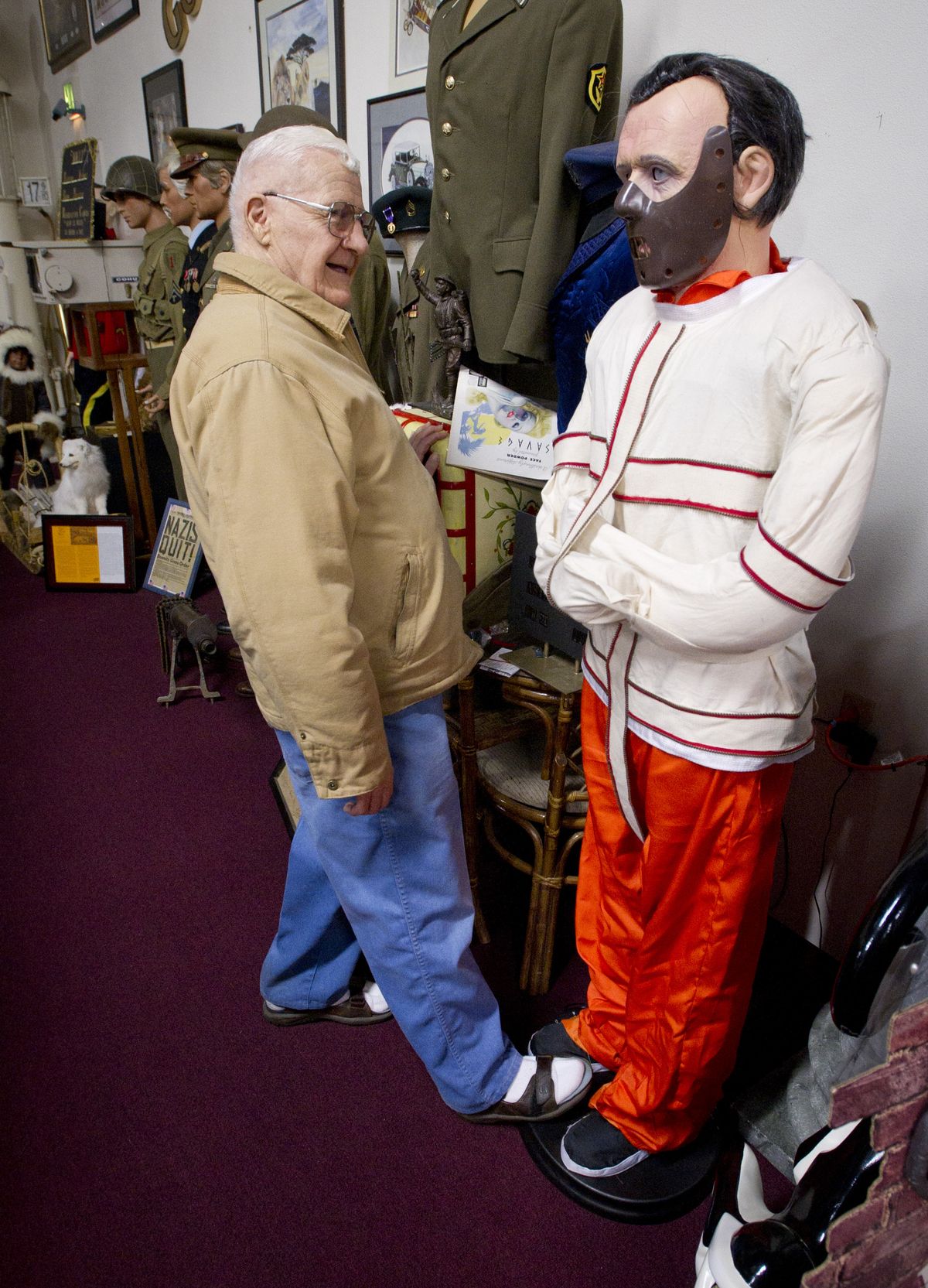Carr’s Museum in Hillyard offers eclectic display

Imagine if Graceland and The Smithsonian Institution had a baby and then moved in together in Hillyard. That’s the best way to describe Carr’s One of a Kind in the World Museum to the uninitiated.
The museum is really more of a collection because there isn’t much rhyme or reason to it.
There simply isn’t a theme except owner Marvin Carr likes the stuff that’s there.
“I always wanted to have a museum,” said Carr, 84. “What’s here? Some of the things are one-of-a-kind. Some of it is just stuff I like.”
Before entering the main part of the museum, Carr will remind visitors to rub the belly of the front office Buddha for good luck. Carved out of milky-green jade, the statue is so heavy Carr said it will never be moved again.
“I don’t know how much it weighs, but it’s terribly heavy,” he said.
The museum started with cars and Carr still has one of Elvis Presley’s cars and a 1968 Lincoln stretch limousine that belonged to Jackie Gleason.
“It’s an unusual powder blue color,” said Carr, affectionately running his hand over the matching upholstery. “It has a radio and an ice chest and everything still in it. And we let people sit in the cars here.”
Lots of hunting trophies are mounted on the back wall, most notably the front half of a two-story tall giraffe.
“We were afraid we couldn’t get that thing in here,” said Carr, gesturing at the giraffe. “He was standing on this little stump, and we had to get rid of that.” The giraffe’s little horns graze the ceiling.
“I wish you could see his eyes,” said Carr. “They are really beautiful.”
A coo-coo clock keeps time in the background.
Carr clearly likes mechanical things, like the figure of a talking Hannibal Lecter from “Silence of the Lambs” who offers to eat any visitor’s liver with some fava beans and a nice Chianti.
“Isn’t that the greatest?” said Carr, stepping on the button that makes Hannibal say his lines over again.
In a corner sits a samurai outfit. In another a Buddha from the 1500s carved out of wood the color of dark chocolate. Two stuffed squirrels drive a fire truck. A beaver paddles a canoe. A pair of Chinese imperial vases, taller than most men, stand to the side.
Carr said he didn’t have anything other than a couple of cars when he bought the building on Freya 15 years ago.
“I needed a space for the cars,” said Carr. He has picked up the rest of his collection mostly at Owens Auction Gallery in Spokane Valley.
There’s a German music box sitting on a table, just a few steps from Bob Hope’s and Humphrey Bogart’s death masks. And no, the place is not haunted.
“They did the masks so they could sell them as collector’s items, now I have some of them,” said Carr.
Of course Carr has a piece by Spokane sculptor Harold Balazs.
“It’s a totem pole, but we have to keep a piece at each end of the museum because it’s too tall to fit in here,” said Carr.
The Spokane Press cover from April 20, 1918, hangs framed across the hall from a trophy lion shot in Botswana in 1969. There’s a surveillance camera from the Hanford nuclear site and uniforms from World Wars I and II. Above the door hangs a huge, dark and daunting oil painting signed Keller.
“I don’t know what that’s worth; I don’t know what a lot of the stuff is worth,” said Carr. “I don’t have a computer. I don’t have a cell phone. This is just the way I like it.”
Carr doesn’t do appraisals for people who drop in with odds and ends, and he’s never had anything donated to the museum.
Is there something he always wanted, but never could acquire?
“A Rolls Royce. I always wanted a Rolls Royce, but it’s never worked out,” Carr said.
He really likes Asian carvings and silk paintings of which the museum features quite a few.
“I like Asian inspired stuff for the detail,” said Carr. “They are real craftsmen. They take the time to make things – we are always in such a hurry here.”
Carr doesn’t share much of his background except that he was born and raised in Spokane, “when it was a sleepy little town. And it was.”
He was stationed in Okinawa during World War II and says he has traveled a lot, but can’t travel any longer.
He worked for the railroad and got the start capital for his museum by selling whatever stocks and bonds he had.
Carr parted with a car, too, not that long ago to fund the museum.
“Most months we barely make enough to cover our water bill here,” said Carr.
A giant black bear watches over everything by the entrance.
“The kids really like that one,” said Carr, looking up at the big bear. “But most people go straight for Elvis’ car and they never look up. They miss a lot.”